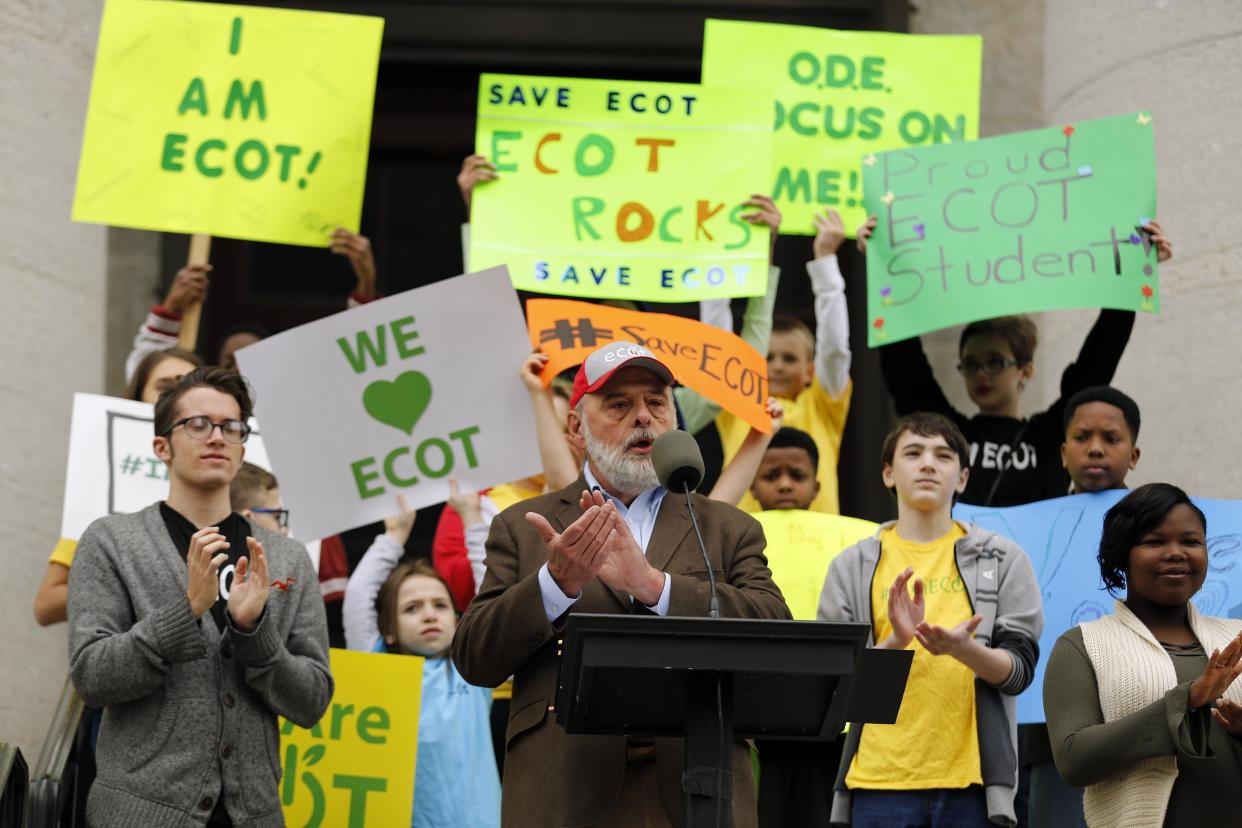Disingenuous charter school industry leaving kids in lurch, taking our money| Opinion

William L. Phillis is a former teacher, principal, superintendent, and assistant superintendent of public instruction. He is currently the executive director of the Ohio Coalition for Equity and Adequacy of School Funding.
In a recent Dispatch guest column, an agent for charter school sponsor the Thomas B. Fordham Institute made a tearful plea to the General Assembly to right the wrong of local property tax funds not following the charter students to these privately-operated charters.
More: It is beyond time that Ohio funded charter schools fairly| Opinion
More: An 'educational disaster' is rocking kids in Columbus, rest of Ohio, researcher says
Aaron Churchill of Fordham — one of the nation’s leading organizations that essentially advocates for the privatization of public education — indicated that charters are held rigorously accountable for results.
Really?
How so?
For the record, local property tax revenue is raised for school district purposes, not privately-operated organizations.

Charter schools are operated privately by non-elected individuals. They are exempt from a multitude of laws and standards by which school districts are regulated.
The National Labor Relations Board has determined that the charter industry operates in the private domain. What makes charters seem “public” is public money. In fact, many charter advocates make the claim that public money is the only criteria for these privately-operated organizations being authenticated as public entities.
When charter advocates initially appealed to legislatures to give them license to privately operate these mostly unregulated schools at public expense, they promised higher quality education on less public funds, in exchange for reduced regulations. In the charter world today, that translates to less transparency and less accountability.
Now charter proponents want more funding and less regulations.
In the beginning of the movement, charter advocates argued that school districts were inefficient and low-performing due to school bureaucracies that stifled creativity, innovation, and high-quality educational opportunities. They promised better outcomes in exchange for deregulation.
Opinion: Don't punish rural taxpayers by funding private schools they don't have
The charter industry has a bureaucratic-like operating structure that typically puts a lesser portion of its funding into classrooms than school districts put into classrooms. The charter sponsors rake off up to three percent of charter school funds for largely undefined supervision and services. Typically charter school boards turn nearly all of their funds over to a management company that assumes the responsibility for the entire school program. In the case of for-profit charter management companies, profits gobble up a significant portion of the funding that should be assigned to the classroom.
More funds for charters will, in most cases, balloon the profits for the operators. In the charter world it is difficult to determine the locus of responsibility for operations and outcomes.
What results have occurred by legalization of this largely unregulated charter industry? Less educational opportunities for students. No improvement in academic results. Half of the charters that opened in Ohio have closed, leaving students in a lurch. Fraud and corruption throughout the charter industry is prevalent. Remember the Electronic Classroom of Tomorrow — ECOT!?
Many of the for-profit charter operations reduce educational opportunities, programming, and services to heighten the profits.
From 1900 to 1976, Ohio reduced the number of school districts from over 3000 to 617 as a means of improving financial efficiency and educational programming. Beginning in 1998, Ohio reversed this course of action in financial efficiency and program improvement by issuing more than 600 charters.
Currently, Ohio has three arrangements for education: the traditional public school system, charter schools, and private school vouchers. This scheme is constitutionally-suspect and reduces efficiency in the use of tax revenues.
The charter industry, by setting forth disingenuous promises, got its foot in the door. The for-profit entrepreneurs quickly capitalized on the lack of accountability and transparency brought on by deregulation.
In this out-of-public- view environment, obscene profits on the backs of students is the charter standard.
Of course, the charter industry contributes heavily to campaign coffers, which in turn produce more tax money for the charter industry. The insanity of this vicious cycle of pay-to-play will continue until the general public realizes that Article I, Section 2 of the Ohio Constitution provides that “all political power is inherent in the people.”
Current state officials will only exacerbate the current chaos.
William L. Phillis is a former teacher, principal, superintendent, and assistant superintendent of public instruction. He is currently the executive director of the Ohio Coalition for Equity and Adequacy of School Funding.
This article originally appeared on The Columbus Dispatch: Ohio charter schools should not be trusted with taxpayer money| Opinion

